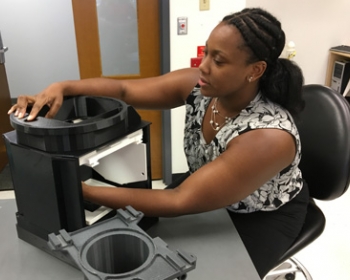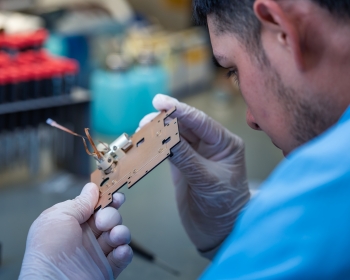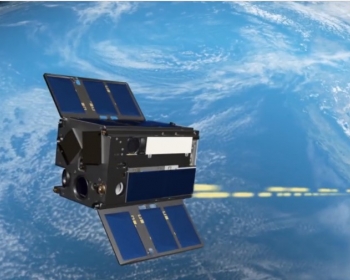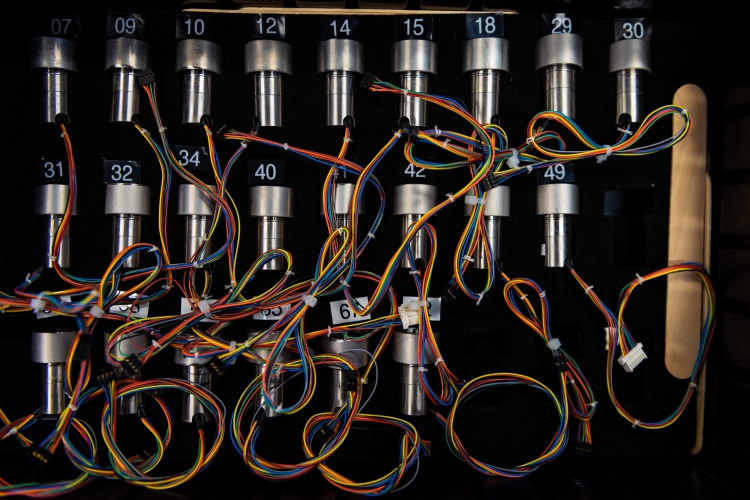
“While Aerospace, as a federally funded research and development center, might be more known for its consulting abilities, the truth is that Aerospace does in fact build things,” said Lynn Friesen, the acting head of
The Aerospace Corporation is not a manufacturer. The company does not mass produce satellites or anything else. However, when it comes to cutting-edge research, sometimes it’s necessary to try out new ideas—with actual hardware.
That’s where

Prototyping is nothing new for Aerospace. For years, the company has developed space science instruments and nano satellites, including a fleet of CubeSats, known as AeroCubes. Small-scale experimentation and testing capabilities have generated insights into artificial intelligence, 3D printing, space weather, and hyperspectral imaging, among other areas.
With the space environment changing and new threats emerging to the nation’s space assets, it’s more urgent than ever to rapidly develop and deploy new technology. Aerospace leadership decided to pull the corporation’s numerous prototyping efforts together, and
Aerospace recently hired Dr. David Miller as its new Chief Technology Officer to bring an intense focus on rapid insertion of new technology into the space enterprise in order to
“In
Check out some of Aerospace’s latest prototypes:

OCSD
The Optical Communications and Sensor Demonstration (OCSD) mission demonstrated an optical laser communications capability operating at a rate 50 times greater than similar systems on a pair of CubeSats. A laser hard-mounted to the satellite was directed by a precision attitude control system that moved the entire satellite for transmission. Additionally, the CubeSats were equipped with novel water-based propulsion systems that enabled the satellites to perform precise movements for proximity demonstrations.

Aerospace Rogue Alpha/Beta CubeSats
Challenged with building and delivering a pair of cube satellites on a tight budget and even tighter timeline of just 18 months, the Aerospace team developed an innovative concept leveraging commercially-available technology and our proven AeroCube spacecraft bus.
The resulting Aerospace Rogue Alpha/Beta CubeSats, also known as AeroCube-15, were launched in November 2019, meeting the target deadline and charting a path forward for further study of rapid reconstitution concepts.

NIRAC
The Near Infrared Airglow Camera (NIRAC) takes nighttime imagery and studies lower atmospheric processes that affect space weather. Airglow is a natural atmospheric emission related to aurora. NIRAC studies the infrared portion of the airglow spectrum with a camera able to capture images of the ground and clouds at night when there is no other light. NIRAC observations of airglow could also lead to new science investigations studying the coupling of the lower atmosphere to space.

